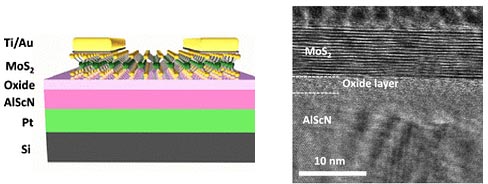The new materials used in this study may enable entirely new paradigms for individual chip components and their overall design.
A team of researchers at the University of Pennsylvania, School of Engineering and Applied Science have shown a potential way of practically integrating both RAM and ROM on a single chip.
In recent studies, they have demonstrated that scandium-doped aluminium nitride (AlScN), a material recently discovered to exhibit ferroelectricity, can be used to make the ferroelectric field-effect transistor (FE-FET) as well as diode-memristor-type memory devices with commercially viable properties.
FE-FET devices are ones that could switch states rapidly enough to perform computation, but also be able to hold those states without being powered, enabling them to function as long-term memory storage. This property of the FE-FET device allows it to serve as both RAM and ROM and can make chips more space-efficient and powerful.

“One of the main ways that chip designers are thinking about getting around the looming limitations of processing vast amounts of data with silicon is finding materials that would allow memory components to be built directly on top of the processor without harming the processor in the process, essentially making two-in-one devices,” said Deep Jariwala, assistant professor in Electrical and Systems Engineering and one of the authors of the paper “Since AlScN can be deposited at relatively low temperatures, we knew it represented a possibility for directly combining memory with logic transistors. We just needed a way to integrate it with the rest of the chip architecture.” The findings of the study were published in the journals Nano Letters and Applied Physics Letters earlier this month.
Due to the properties of the FE-FET device, it is capable of serving as both Serving RAM and ROM and can make chips more space-efficient and powerful. However, finding the right materials that best exhibit the necessary ferroelectric effect has been a challenge. The team at the University of Pennsylvania found a solution in molybdenum disulfide, or MoS2, which is a two-dimensional material. Using a single layer of this MoS2 as a channel out of an AlScN-based FE-FET device, the team was able to test its switching speed and memory stability. They demonstrated the ability to produce AlScN as thin as 20 nanometers, reducing the overall size of the device as well as the voltage it requires.
“The issue really has been to make their fabrication compatible with processors and make them last longer. This is where our 2D materials come in; they are so thin that once a memory bit is written in them, they could preserve that information in the form of charge for years.” Said Jariwala.








